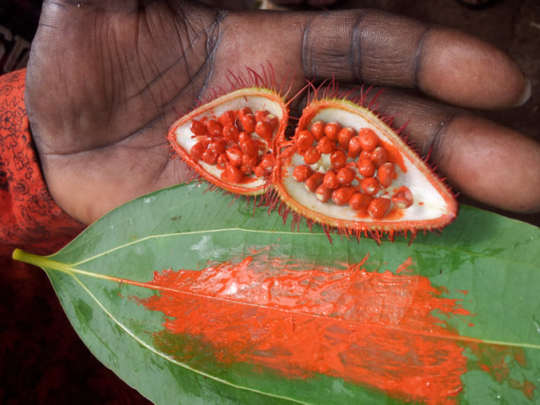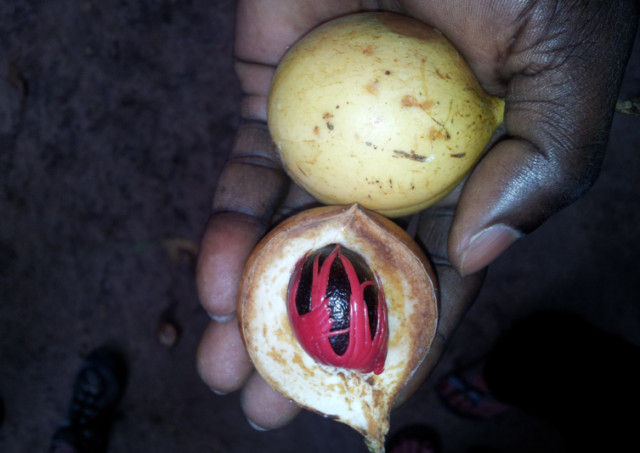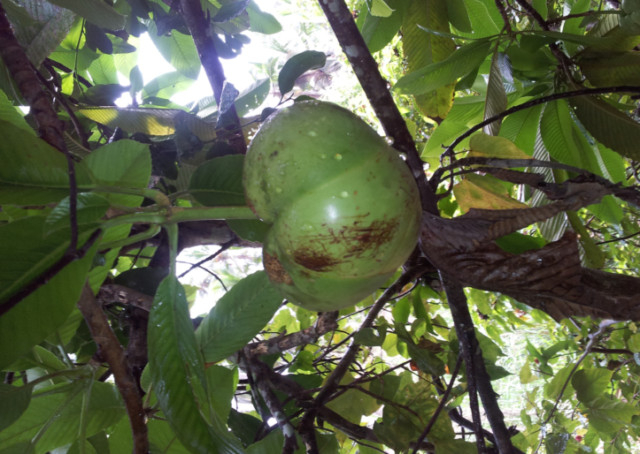
As the rickety vehicle tumbles down the muddy path, the aroma of spices wafts through the air. At first glance, the dense vegetation in front looks just like any other forested area around Zanzibar, a semi-autonomous island off the coast of Tanzania. But this is no ordinary outgrowth; it is one of the hundreds of “spice farms” that dot this island. And over the centuries, the trade in these exotic plants has firmly established Zanzibar as one of the key Spice Islands of the world.
For hundreds of years, the cloves, nutmeg, ginger, pepper and cardamom on this island sustained commerce across countries along the Indian Ocean, bringing Persians from Shiraz in Iran, Arabs from present-day Oman and Gujaratis from the western coast of India as traders — and as future rulers and slave dealers of Zanzibar. In fact, the island gets its name from the Arabic words “zanj” (black-skinned) and “bar” (coast) — coast of the black people. Even the word Swahili comes from the Arabic word “sawahil” meaning “shore dwellers”.
Zanzibar’s spices were so sought after that it attracted explorers from countries as far away as the United States, which established a consulate here in 1837, one of Washington’s first diplomatic missions in Africa.
Fouad Mohammad, a well-to-do spice trader, beams with pride as he shows us around the spice farm. As we walk, the air is thick with the clashing scent of a multitude of spices. “Nutmeg,” he says, as he cuts open a fruit to reveal something in the pit that resembles a beetle. “There are male and female nutmegs. Its oil is used in perfumes and to make modern medicines. Nutmeg is used to flavour many dishes, in different cuisines.” Guessing I hail from the subcontinent, he adds, “It is also added to garam masala.” Even Coca-Cola is believed to use nutmeg in its secret formula.
The trade in spices is almost as old as human civilisation. The ancient Egyptians are said to have used spices in the mummification process; the ancient Chinese used them in numerous medicines. In many cultures through the millennia, pepper was used as a preservative, alongside a saline solution, in foods such as meat.
The reason for the trade in spices being so fantastically profitable could be put down to demand and supply. Arab and Muslim traders monopolised the Indian Ocean routes, tightly controlling the supply of spices to Europe. That was until May 21, 1498, when fabled Portuguese explorer Vasco Da Gama went around the Cape of Good Hope and reached India’s Malabar coast — and discovered a new trade route to the Spice Islands of the east. The Portuguese, and after them the Dutch, went on to dominate the Indian Ocean spice trade. They did not bat an eyelid before using any amount of force deemed necessary to secure production in their colonies in the Far East. The Dutch East India Company scaled new heights in brutality, using its huge private army to subdue native populations and imposing the death penalty on anyone caught growing spices, especially cloves. Despite this, smuggled clove seeds did manage to get to Zanzibar in the late 18th century.
“Cloves are said to be brought to Zanzibar in the late 1770s or 1780s. The climate and soil here were perfectly suited to growing cloves. So much so that, by the middle of the 19th century, Zanzibar became the biggest producer of cloves in the world. Other spices were already being grown extensively in Zanzibar. Cinnamon and cardamom were brought to the island by Asian traders,” Fouad said.
The history of Zanzibar is intrinsically linked to Oman. Traditionally a sea-faring nation, Oman destroyed Portuguese dominance of the Indian Ocean trade routes once and for all after capturing their base, Fort Jesus, in Mombasa, in 1698. It then set its sights on nearby Zanzibar, building the Old Fort in present-day Stone Town in the early 1710s to defend the island. Sayyid Said Bin Sultan Al Bu Said took power in Muscat in 1806 as the Sultan of Oman. When, in 1828, he first visited Zanzibar, he was taken in by the charms of the islands — and potential profits to be made. In 1840, he moved his capital from Muscat to Zanzibar. Unlike the Dutch in their Far East colonies, Sultan Said encouraged everyone in Zanzibar to grow cloves, even threatening to confiscate their properties if they failed to do so.
Under him, trade blossomed further — slaves and ivory from the African mainland were brought to Zanzibar for export; spices from Zanzibar went to the mainland, and to countries across the Indian Ocean. The slave trade remains a dark and shameful chapter in Zanzibar’s history. Sultan Said became extremely rich as a result of trading in spices, ivory and humans. He only agreed to end the slave trade in 1847, given the mounting pressure from the British, who had banned it following the Slavery Abolition Act of 1833. Though he spent much of his time in Zanzibar, Sultan Said visited Oman frequently. It was on one of his return journeys to Zanzibar that he died at sea, near Seychelles, in 1856. A succession battle soon ensued. By 1862, Zanzibar and Oman had become separate sultanates, each ruled by a son of Sultan Said.
At 9.02am on August 27, 1896, the Anglo-Zanzibar War broke out. The cause of the war was the death of the pro-British Sultan Hamad Bin Thuwaini and the succession by Sultan Khalid Bin Barghash, who was not favoured by the crown. The Sultan’s palace, the Bait Al Hukum, suffered sustained naval bombardment, leaving 500 Zanzibaris dead or wounded. Victory was achieved at exactly 9.40 am. Sultan Khalid fled to the German consulate and then on to German East Africa (present-day mainland Tanzania) and was replaced by a British puppet. The Anglo-Zanzibar War, thereby, officially became the shortest war in the history of the world, lasting 38 minutes.
Back in the spice farm, Fouad cuts open a hairy pod unlike any I have seen before. Inside, there are juicy, bright red seeds that he rubs over a leaf, forming a paste. “No woman would be able to apply lipstick without this — annatto. It is one of the key ingredients.” He then adds, as an afterthought. “It is also used to make tandoori colouring.”
As he takes us around, Fouad shaves a strip from the bark of a tree to reveal a cinnamon stick. He points out that Zanzibaris use turmeric instead of saffron in their cuisine as the latter is one of the few spices that does not grow on the island and is hence too expensive. “But the most expensive among spices grown in Zanzibar are vanilla beans. They were brought from Mexico, most likely by the Portuguese.”
Further down, what looks like an apple dangles from a tree. “This is not an apple; we call it elephant apple. It is inedible but it is the key element in making hair gel. We export this too.” As he cuts open a cocoa pod, Fouad reveals that the white seeds therein are not the ingredients used to make white chocolate. “White chocolate is not really chocolate, as no cocoa seed is used in making it.”
Despite the variety on display at the spice farm, Fouad concedes that cloves are still the most treasured spice of this Spice Island. As the author Roald Dahl observes in his memoirs “Going Solo”: “... we called in at Zanzibar where the air was filled with the amazing spicy-sweet scent of cloves, and I stood by the rail at the old Arab town...”




